Gardening is a rewarding hobby that anyone can enjoy, regardless of the size of their yard. Whether you have a sprawling garden or a small space, there are plenty of ways to grow and nurture your green thumb. This guide will provide beginner-friendly gardening tips to help you get started.
1. Know What You Can Grow: Consider factors such as your location, the size of your yard, and the amount of time you can dedicate to gardening. Determine the purpose of your garden, whether it’s for sustenance or decoration. Research fruits and vegetables that grow well in your specific season and check out resources like the Seasonal Food Guide and the USDA’s Family Garden Planning Guide for more information on what produce is available in your area.
2. Determine Your Gardening Spot: Take note of the sunlight, water, and soil conditions in your chosen gardening spot. Choose an area with at least six to eight hours of sunlight and make sure the soil has proper drainage. Avoid areas with excessive shade or moisture that can lead to mold and mildew. Consider contacting your local utility company before digging deep or making any significant changes to your yard.
3. Choose Your Plants: Based on your research and gardening spot, select plants that are suitable for your environment. Start with easy-to-grow plants like bell peppers, tomatoes, and herbs. Consider plants that are safe for children and pets if necessary.
4. Get Your Gear: Invest in essential gardening tools like gloves, shears, a rake or garden hoe, a garden fork or spade, and a watering can or hose. Make sure to have rich soil that provides nutrients for your plants. If you’re planning a large garden, you can also consider renting a rototiller for soil preparation.
5. Regularly Tend to Your Plants and Remove Any Weeds: Maintaining your garden is crucial for its growth. Remove weeds that can compete with your plants for nutrients and spread diseases. Watch out for animals, and use fences or repellents to protect your plants. Regularly water and fertilize your plants according to their needs.
Key Takeaways:
- Research fruits and vegetables that grow well in your specific season.
- Choose an area with at least six to eight hours of sunlight and make sure the soil has proper drainage.
- Invest in essential gardening tools like gloves, shears, a rake or garden hoe, a garden fork or spade, and a watering can or hose.
- Regularly tend to your plants and remove any weeds that can compete with them for nutrients.
Choosing the Right Plants for Your Garden
Consider your location, yard size, and the time you can dedicate to gardening when choosing what to grow. It’s important to select plants that thrive in your area and fit the purpose of your garden, whether it’s for sustenance or decoration.
Gardening for sustenance is a popular approach, and selecting fruits and vegetables that grow well according to their specific season is a smart strategy. You can find a comprehensive list of what produce is available in the U.S. according to different months of the year. In addition, if you are planting a vegetable garden for your family, it’s recommended to check the U.S. Department of Agriculture’s Family Garden Planning Guide to determine how many pounds of each crop are needed per person and how many rows to plant.
After deciding on the types of plants you want to grow, it’s important to choose the right gardening spot that receives adequate sunlight and good drainage. You should also have the proper tools and gear, such as gloves, shears, and watering cans, to maintain your garden effectively. Regularly tending to your plants and removing weeds are essential tasks to maintain a healthy garden. Providing the right amount of water and sunlight is also crucial for your plants to thrive.
Learning how to save seeds, composting, and sprouting baby plants are cost-effective and beginner-friendly gardening ideas that can help you hone your skills without spending a dime. By following these tips and ideas, you can choose the right plants for your garden and create a beautiful and flourishing space.
Gardening for Sustenance: Growing Your Own Food
Gardening for sustenance is common, and seasonal food guides can help you decide what to grow. It’s important to reflect on the purpose of your garden, whether it’s for sustenance, decoration, or occasional spices. To get started, consult resources like the Seasonal Food Guide to determine which produce is available in your area during different months of the year. Additionally, the USDA’s Family Garden Planning Guide provides useful information on how much to plant per person based on estimated yields.
When selecting plants, it’s essential to consider the factors that will influence their growth, such as where you live, the size of your yard, and the amount of sunlight it receives. Choose a location in your yard that receives at least six to eight hours of sunlight and avoid areas with excessive shade or moisture.
Investing in the right gardening tools like gloves, shears, rakes, spades, and watering cans can make the process more enjoyable and efficient. Regularly tending to your plants, removing weeds, and protecting them from animals will help maintain a healthy garden.
For beginners, there are gardening ideas that require little to no upfront cost, such as saving seeds, growing plants from cuttings, and composting. Saving seeds from fruits and vegetables you already eat is a cost-effective way to start new plants. Growing plants from cuttings can be done with soft herbs like basil, and it allows you to propagate new plants from existing ones. Composting is another great gardening idea that transforms organic materials into nutrient-rich soil, eliminating the need for store-bought topsoil and mulch.
By following these gardening ideas and honing your skills, you can successfully grow your own food and enjoy the benefits of sustenance gardening.
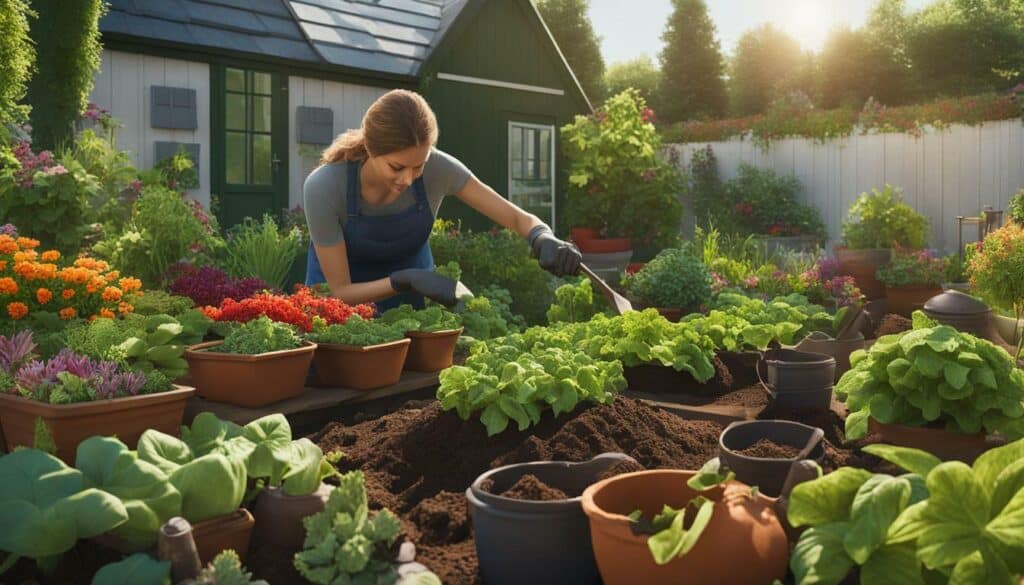
Finding the Perfect Spot for Your Garden
When it comes to gardening, choosing the right location is crucial for a successful harvest. As a beginner gardener, there are three key factors you need to consider when selecting a garden spot:
- Where you live and what can grow well there
- The size of your yard and the amount of sunlight it receives
- The amount of time you can dedicate to gardening
Reflect on the purpose of your garden as well, whether it is for sustenance, decoration, or growing occasional spices.
Take into account the seasons and select fruits and vegetables that grow well during specific times of the year. For instance, tomatoes and peppers thrive in warm weather and cucumbers and peas grow well during cooler temperatures.
Ensure that your garden gets at least six to eight hours of sunlight, but adjust the types of vegetables based on the amount of sunlight available. Pay attention to the amount of shade in the area and avoid areas with too much shade. Additionally, choose a garden spot with good drainage and air circulation to prevent moisture buildup and fungal growth. Wet soil can cause root rot and limit plant growth.
It is also important to research and choose plants that are safe for children and pets. Some plants are toxic and can cause harm if ingested.
Having the right gardening tools and gear is essential for a successful garden. Gloves, shears, a rake, a garden hoe, and rich soil are some of the basic gardening tools every beginner gardener should have.
Regularly tend to your plants, remove weeds, and protect them from animals. In this way, you can prevent pest infestations and ensure the health and well-being of your plants. By following these guidelines and beginner gardening hacks, you can find the perfect spot for your garden and create a successful gardening experience.
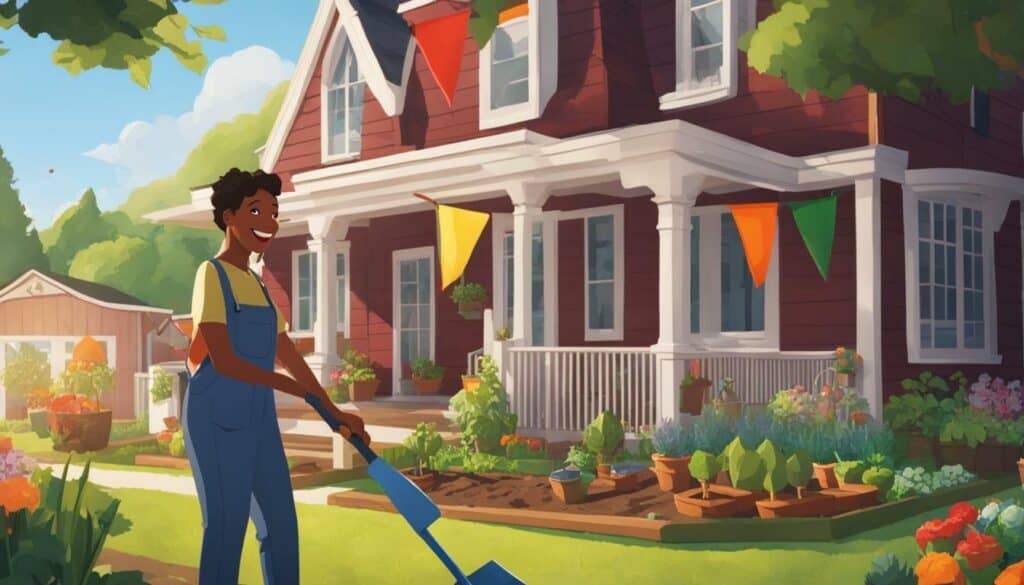
Essential Tools and Materials for Beginner Gardeners
Basic gardening tools like gloves, shears, a rake or garden hoe, a garden fork or spade, a garden hose or watering can, and rich soil are essential. These tools will help you plant, cultivate, and harvest your garden effectively.
However, there are other materials to consider as well. For example, it’s important to choose the right plants for your specific environment. Look for plants that are beginner-friendly and don’t require a lot of maintenance. Low-maintenance plants include succulents, herbs, and certain types of vegetables like tomatoes, peppers, and lettuce.
Another quick and easy gardening idea for beginners is to learn how to save seeds. This allows you to grow new plants without having to purchase seeds from a store. You can save seeds from the fruits and vegetables you already eat, like squash, peppers, and tomatoes. Simply rinse the seeds thoroughly, let them dry for a few days, and store them in a cool, dry place.
Composting is another budget-friendly way to enrich your soil and keep your garden healthy. You can start composting by creating a compost bin with some chicken wire and a few wooden stakes. Add your food scraps, grass clippings, and other organic matter to the bin, and let it break down over time.
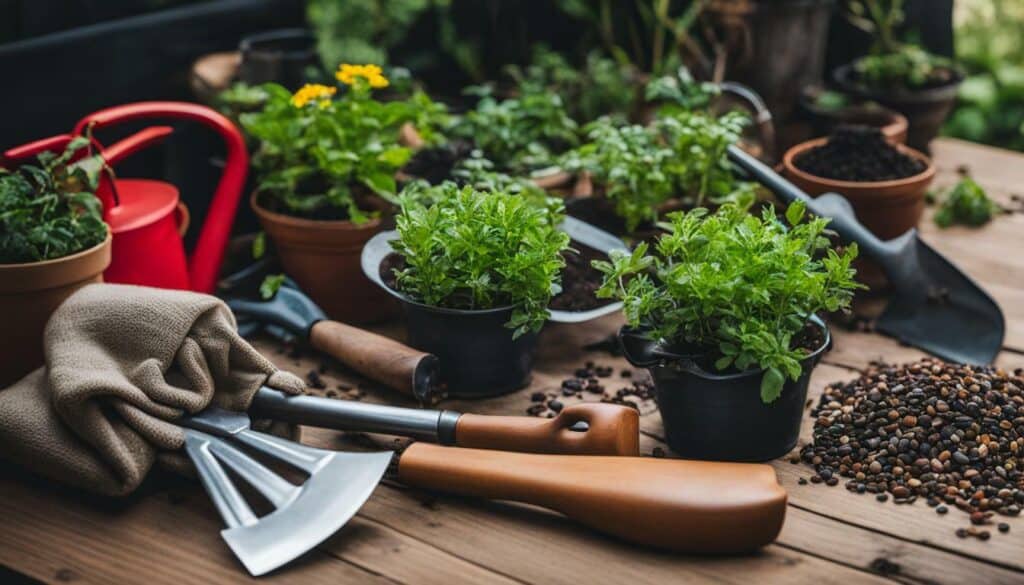
Finally, sprouting baby plants is a great way to start your garden without spending money at the nursery. Simply cut off the bottom of a plastic bottle, fill it with soil, and plant your seeds. Keep the soil moist and place the bottle in a sunny spot. Within a few days, you should see your seeds start to sprout.
By using these beginner-friendly gardening tips and techniques, you can create a successful garden without breaking the bank. Remember to choose the right plants for your environment, save seeds, compost, and sprout baby plants to ensure a thriving garden.
Caring for Your Garden
Regularly tend to your plants, remove weeds, and protect them from animals. This is the key to a thriving garden, regardless of its size. While it may seem overwhelming at first, proper care for your garden can become a fulfilling and enjoyable hobby with some practice.
The first step to caring for your garden is to remove weeds. Weeds can compete for resources and hinder plant growth, so it is important to remove them regularly. Consider using eco-friendly weed killers or laying down Weed Guard to prevent weed growth.
Tending to your plants also involves regularly watering them, as most plants require at least an inch of water per week. You can use a garden hose or watering can to water them, but be mindful of overwatering which can drown the plants.
Protecting your plants from animals is also crucial. Building a fence, using repellents, or utilizing motion-detecting sprays are some effective ways to prevent animals from eating or destroying your plants.
Choosing the right plants for your garden is another key aspect of caring for it. Bell peppers, tomatoes, and zucchini are all beginner-friendly plants that are easy to grow. It is essential to equip yourself with the necessary gardening tools, including gloves, shears, and rich soil. Depending on the size of your garden, you may also want to invest in a rototiller to turn over larger amounts of soil.
Additionally, learning how to save seeds, composting, and sprouting baby plants are great gardening ideas for beginners that don’t require any upfront cash investment. Composting provides nutrient-rich soil for your plants and can be done using organic materials such as vegetable-based food scraps, unbleached paper towels, coffee grounds, and lawn clippings. Finally, sprouting seedlings from dried seeds and nurturing them into full-grown plants is a cost-effective way to start your garden.
With these low-maintenance gardening ideas and beginner-friendly tips, you can care for your garden and enjoy the benefits of growing your own food and creating a beautiful outdoor space. Cultivating a green thumb takes practice, but with trial and error, you can enjoy the process of caring for your garden.
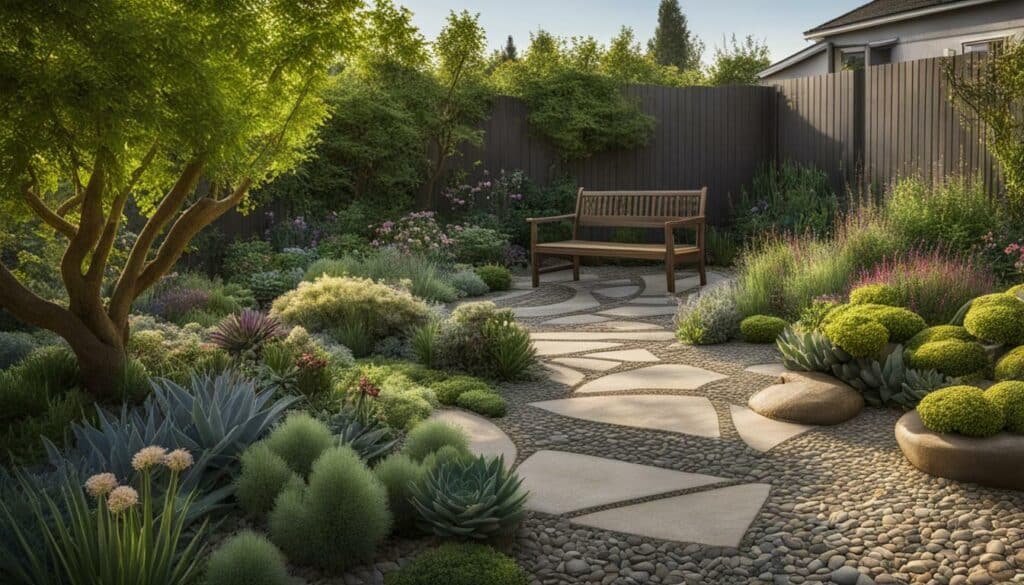
Propagating and Saving Seeds
Learn about saving seeds from the foods you already eat, growing new plants from cuttings, and finding wild seeds. These beginner-friendly gardening tips allow you to start your garden without spending much money.
One way to save money is to save seeds from fruits and vegetables that you already enjoy eating. Simply remove the seeds, dry them, and store them in a cool, dry place. Be sure to label the seeds with their name and the date they were saved for easy reference later on.
| Crop | Seed Saving Tips |
|---|---|
| Tomatoes | Remove seeds and pulp, rinse with water, and dry on a paper towel for a few days. |
| Peppers | Allow peppers to fully ripen on the plant, then cut open and remove seeds. Rinse with water and dry on a paper towel for a few days. |
| Beans | Allow beans to dry on the plant, then harvest the dry pods and remove the seeds. Store in a cool, dry place. |
Another method is to grow new plants from cuttings. Soft herbs like basil can be propagated by placing the cuttings in water until roots develop, then transplanting them into soil. Woody herbs like sage can be propagated by taking fresh green clippings and placing them in soil. Make sure to keep the soil moist and in a warm, sunny location for faster growth.
Beginners can also find wild seeds by identifying plants they like in natural locations and researching how to gather and grow them. Some common wild seeds include dandelions, sunflowers, and wildflowers.
Composting is a valuable practice for creating nutrient-rich soil. Organic materials like vegetable scraps, coffee grounds, and lawn clippings can be composted to create compost that can be used in the garden. Check out this helpful guide to get started with composting: https://www.epa.gov/recycle/composting-home
Lastly, sprouting baby plants from saved seeds is a cost-effective way to start a garden. Place dried seeds on a damp paper towel in a plastic bag and keep them in a warm and sunny location. Once the seeds sprout, plant them in soil and provide the necessary care for their growth.
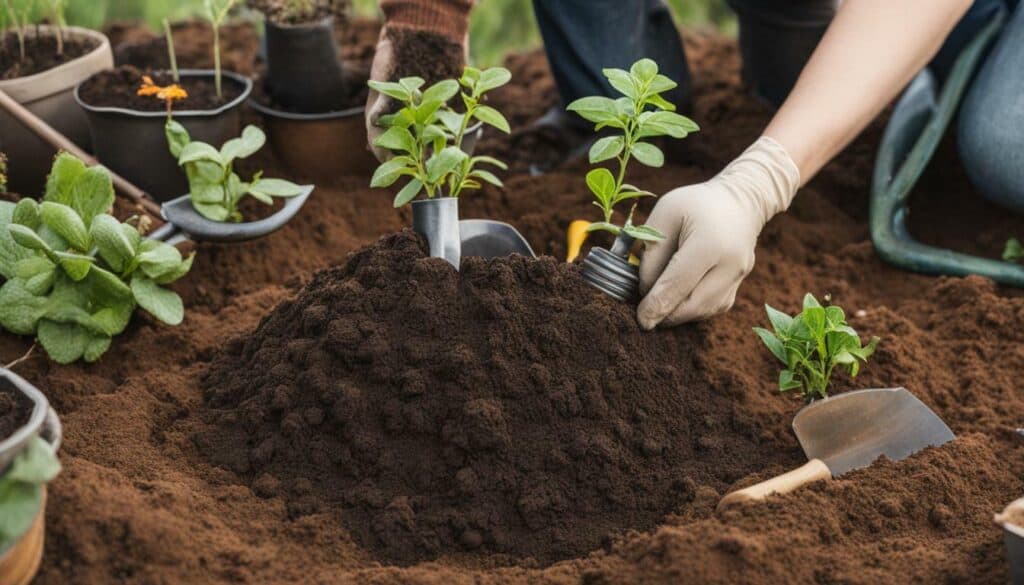
Whether it’s saving seeds, growing new plants from cuttings, finding wild seeds, composting, or sprouting baby plants, these gardening ideas for beginners allow for the enjoyment and success of gardening without breaking the bank.
Composting for Healthy Soil
Composting is a cost-effective way to enrich your soil, and you can build your composting bins. It involves decomposing organic materials in aerobic conditions to create nutrient-rich soil. As a beginner gardener, learning how to compost can save you money and provide essential nutrients to your plants. By turning the compost regularly, you can speed up the decomposition process and create a rich, dark soil that will help your plants grow strong and healthy.
Creating a composting bin can be as simple as finding an old trash can or building a wooden box. Just make sure it has enough space for air to flow through and a lid to keep out pests. You can start by adding kitchen scraps, such as fruit and vegetable peels, coffee grounds, and eggshells, as well as yard waste like leaves and grass clippings.
Sprouting seeds into seedlings is another essential step to starting your garden, and it can be done without any upfront investment. Simply place dried seeds on a damp paper towel and keep them in a warm, sunny location until they sprout. Once they have sprouted, transfer them to nutrient-rich soil and provide them with enough water and sunlight. Keeping the seedlings warm and moist is crucial for their growth.
These easy gardening projects for beginners are not only cost-effective but also beneficial for the environment. By saving seeds, learning how to compost, and sprouting baby plants, you can start your garden without spending money at the nursery. In addition, composting reduces the amount of organic waste that goes to landfills, which lowers greenhouse gas emissions and helps to conserve natural resources.
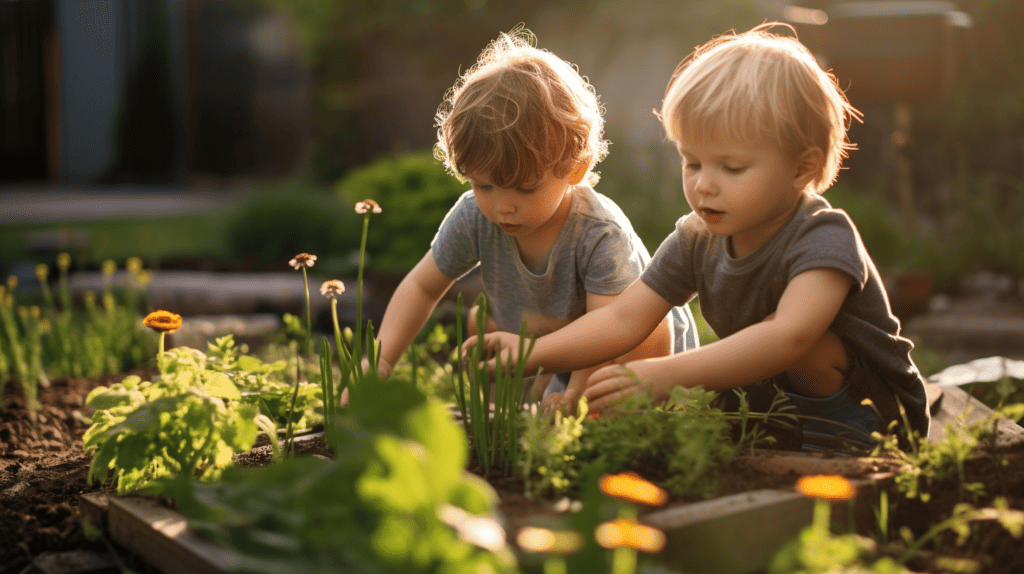
Starting Your Garden on a Budget
Sprouting baby plants from saved seeds allows you to start your garden without spending money at the nursery. This budget-friendly option is as simple as saving the seeds from the foods you already eat. Bell peppers, tomatoes, and green beans are excellent plants to start with, as they are easy to grow and produce a plentiful harvest. Once you have collected your seeds, you can store them in a cool, dry place until you are ready to plant them.
Growing new plants from cuttings is another economical option for the budget-conscious gardener. Simply take a cutting from a healthy plant, dip the cut end in rooting hormone, and plant it in a pot with moist soil. Keep the soil moist and in a few weeks, new roots should develop. Once the roots have established themselves, the new plant can be transferred to your garden.
For those who are feeling adventurous, gathering wild seeds from your local area is an excellent way to start your garden on a budget. Wildflowers and native plants that grow in your region are often well-adapted to the local climate and require less maintenance than non-native plants. Take a walk in the park or a nearby natural area and collect seeds that appeal to you. Plant them in pots to start, and once they have grown, transplant them into your garden.
Composting is a cost-effective way to enhance your soil without spending money. Vegetable-based food scraps, coffee grounds, and lawn clippings are excellent materials to add to your compost pile, creating a nutrient-rich soil for your plants. Not only is it a budget-friendly option, but it’s also an eco-friendly way to reduce waste and enrich your garden soil. Building your own compost bin is a simple process, and there are many online resources to guide you through the process.
Starting a garden on a budget is not only possible but can be a fun and rewarding experience. With a little creativity and resourcefulness, you can start your own garden without breaking the bank. By utilizing these beginner gardening hacks, you’ll be on your way to cultivating your green thumb in no time.
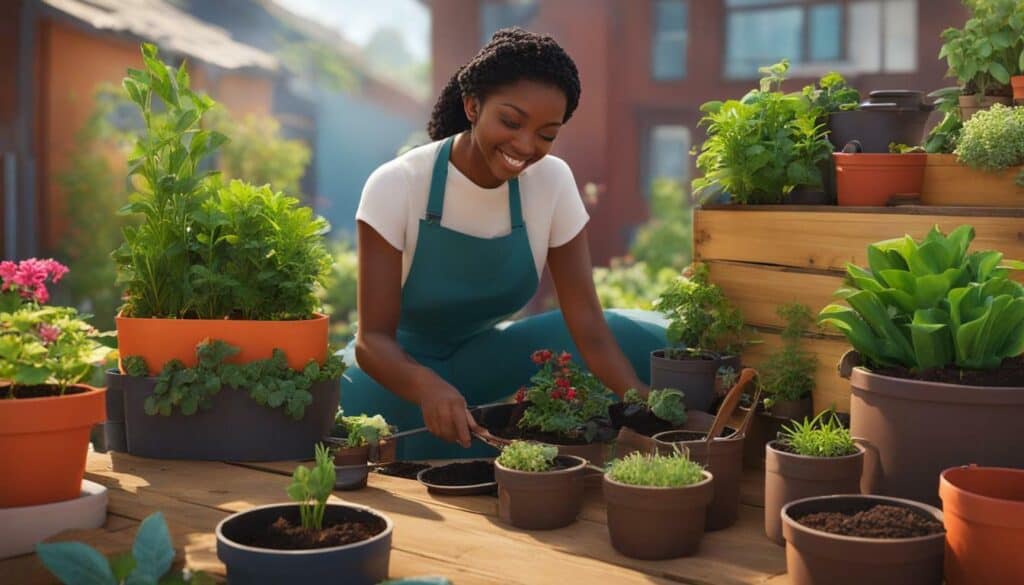
Conclusion
With these easy gardening ideas for beginners, you can unleash your green thumb and transform your backyard into a vibrant and thriving oasis. Start your gardening journey today and enjoy the many rewards of growing your own plants and food.
Gardening is a rewarding hobby that can be pursued regardless of the size of your yard. Whether you have acres of land or a small backyard, there are ways to cultivate a green thumb. The first step is to consider where you live, the size of your yard, and the time you can dedicate to gardening.
It’s important to determine the purpose of your garden – whether it’s for sustenance or decoration. Research what fruits and vegetables grow well in your specific season and location. You can use resources like the Seasonal Food Guide and the U.S. Department of Agriculture’s Family Garden Planning Guide to help you plan your garden.
Choosing the right gardening spot is crucial, considering factors such as sunlight, water drainage, and air circulation. Adequate exposure to sunlight is necessary for plants to thrive, so choose an area that receives at least six to eight hours of sunlight. Avoid areas with excessive shade and ensure proper drainage to prevent mold and mildew growth.
When selecting plants, consider your gardening goals and the space available. There are recommended plants for beginners such as bell peppers, tomatoes, strawberries, and zucchini. Additionally, consider the necessary tools and equipment for gardening, including gloves, shears, a rake or garden hoe, a garden fork or spade, a garden hose or watering can, and rich soil.
Regularly tending to your plants is essential for their growth and health. Remove weeds to prevent them from stealing water and nutrients from your plants. Look out for animals that may feed on your plants and take measures to protect them. Proper care and maintenance of your plants will ensure their longevity.
If you’re a beginner, don’t be discouraged. There are gardening ideas that don’t require any upfront cash investment, such as saving seeds from the foods you eat, growing new plants from cuttings, and finding wild seeds. Composting is another valuable practice that provides nutrient-rich soil for your garden. You can build your composting bins using free pallets and compost organic materials such as vegetable scraps, coffee grounds, and lawn clippings.
Finally, sprouting baby plants from the saved seeds can be a rewarding process. Fill small containers with compost, place the seeds on a damp paper towel, and watch them sprout. Keep the seedlings warm and moist and thin them as they grow to provide more space for the stronger plants.
By following these gardening ideas for beginners, you can develop your skills and enjoy the benefits of a flourishing garden without breaking the bank. Gardening not only provides fresh produce and beautiful plants, but it also instills a sense of agency and accomplishment. So start gardening and see your green thumb flourish.
FAQ
Q: Can anyone start a garden, regardless of the size of their yard?
A: Yes, it doesn’t matter the size of your yard, anyone can start a garden.
Q: What factors should I consider when choosing what to grow in my garden?
A: Consider your location, yard size, and the time you can dedicate to gardening when choosing what to grow.
Q: Is gardening for sustenance common?
A: Yes, gardening for sustenance is common, and seasonal food guides can help you decide what to grow.
Q: How do I choose the right spot for my garden?
A: Choose a gardening spot with at least 6-8 hours of sunlight and good drainage.
Q: What types of plants should I choose for my garden?
A: Select plants that are suitable for your location and purpose, such as vegetables or flowers.
Q: What are the essential tools and materials for beginner gardeners?
A: Basic gardening tools like gloves, shears, a rake or garden hoe, a garden fork or spade, a garden hose or watering can, and rich soil are essential.
Q: How should I care for my garden?
A: Regularly tend to your plants, remove weeds, and protect them from animals.
Q: How can I propagate and save seeds for my garden?
A: Learn about saving seeds from the foods you already eat, growing new plants from cuttings, and finding wild seeds.
Q: What is composting and how can it benefit my garden?
A: Composting is a cost-effective way to enrich your soil, and you can build your composting bins.
Q: How can I start my garden on a budget?
A: Sprouting baby plants from saved seeds allows you to start your garden without spending money at the nursery.
What are Some General Gardening Tips for Beginners?
Planning to start your green thumb gardening journey? Here are a few essential green thumb gardening tips for beginners. First, choose the right plants for your climate and location. Next, ensure your plants get adequate sunlight and water, but avoid overwatering. Don’t forget to remove weeds regularly and provide proper soil care. Lastly, educate yourself about the specific needs of each plant to keep them thriving.
Source Links
- https://portfarms.com/finding-your-green-thumb/
- https://plantcareforbeginners.com/articles/houseplants-101-how-to-get-a-green-thumb
- https://revivalist.com/gardening-ideas-for-beginners-to-develop-your-green-thumb-for-free/
- https://evashockey.com/gardeninghacksgreenthumb/
- https://www.almanac.com/vegetable-gardening-for-beginners
- https://shiplapandshells.com/beginners-guide-to-flower-gardening/
- https://www.homesandgardens.com/gardens/best-plants-for-beginners
- https://shiftingroots.com/10-easy-vegetables/
- https://www.homesteadingwhereyouare.com/2020/04/07/self-sufficient-garden-staple-crops/
- https://www.almanac.com/10-tips-beginner-gardeners
- https://www.bhg.com/gardening/yard/garden-care/ten-steps-to-beginning-a-garden/
- https://www.gardenersworld.com/product-guides/growing/essential-gardening-tools-list/
- https://www.almanac.com/gardening-tools-guide
- https://www.washingtonpost.com/home/2023/02/28/essential-garden-tools/
- https://growinginthegarden.com/gardening-for-beginners-how-to-start-a-garden-in-8-simple-steps/
- https://www.architecturaldigest.com/story/vegetable-garden-ideas
- https://www.seedsavers.org/saving-seeds-for-beginners
- https://gardening.org/seed-saving-basics/
- https://www.zone3vegetablegardening.com/post/a-beginners-guide-to-saving-seeds
- https://dontwastethecrumbs.com/composting-basics-for-beginners/
- https://www.bhg.com/gardening/yard/compost/how-to-compost/
- https://journeywithjill.net/gardening/2017/02/14/composting-for-the-beginner/
- https://www.gardenista.com/posts/first-garden-start-garden-practically-free-budget/
- https://www.tenthacrefarm.com/how-to-start-a-garden-on-a-budget/
- https://savvygardening.com/how-to-start-a-vegetable-garden/
- https://www.betterhealth.vic.gov.au/health/healthyliving/gardening-for-children
- https://content.ces.ncsu.edu/home-vegetable-gardening-a-quick-reference-guide

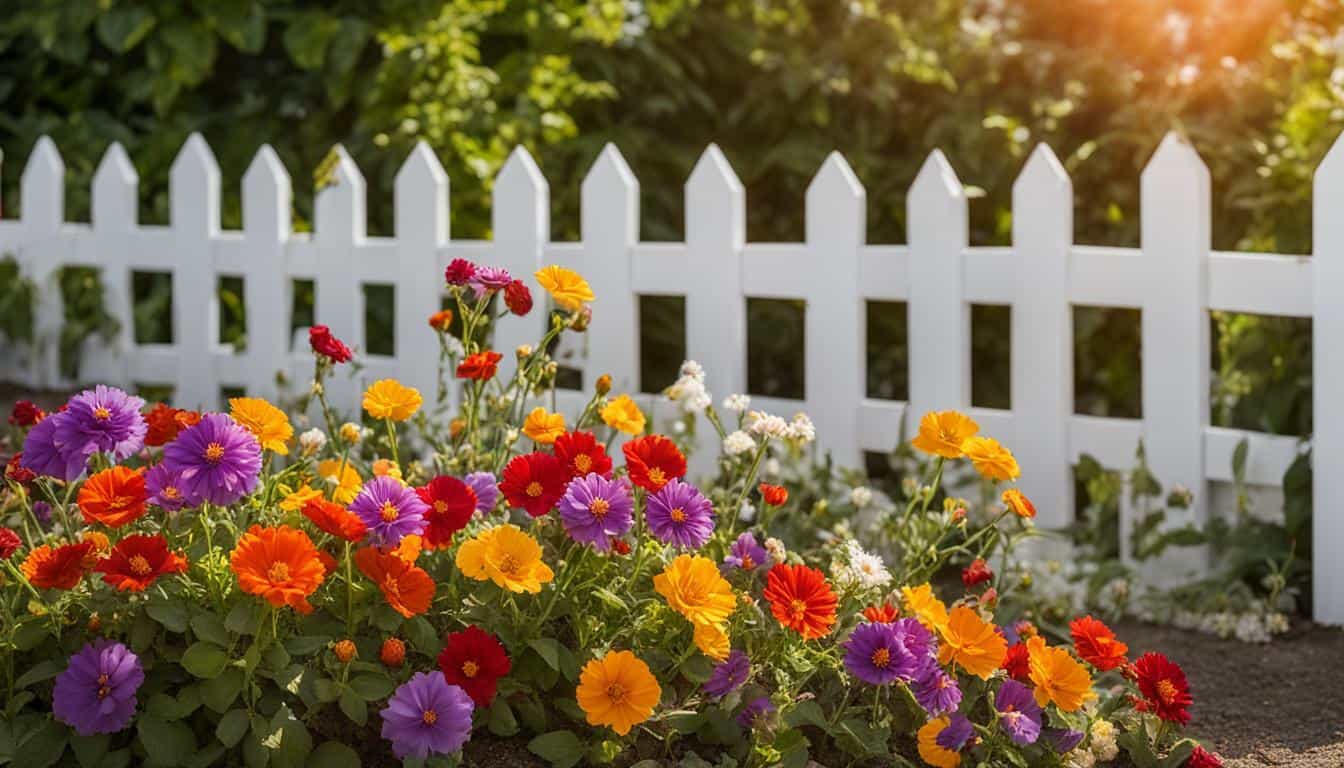



Leave a Reply